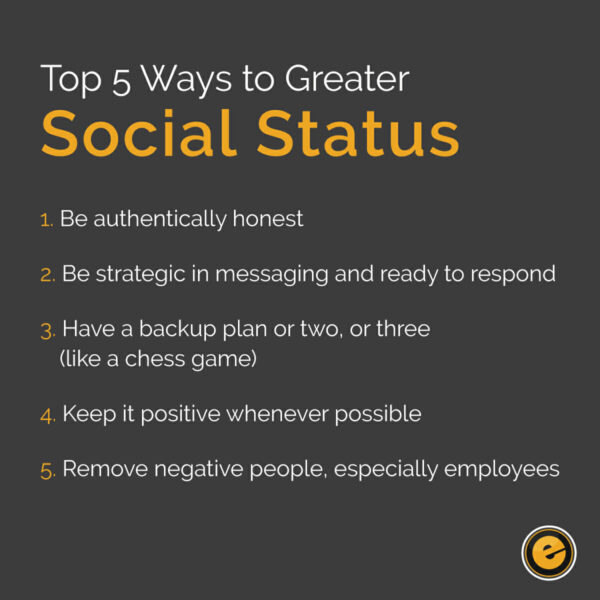Life circumstances have a way of setting the tone for who we are and how we perceive the world around us. While most of us may try to leave our personal world outside of the workplace, it’s obvious that to err on the side of ‘fail’ in that would be prudent. But why? Has negativity gone wild? Moreover, is it an accepted norm instead of a character flaw formerly sought to overcome? When negativity impacts business relationships, do we have the mental and emotional chops to strategically maneuver it in our favor?
Perhaps it depends on whether you see a glass half empty, half full, or ample with opportunity…
If Nothing Is Off the Table, Be Careful About How You Set It
Remember the days when you were a mere toddler or seven years old when your mind was full of wonder. The most difficult concept to learn (just ask your parents) was the term and acceptance of the word “No”. (I know a few adults that still have trouble with this.)
Is it because we are naturally hardwired for “Yes” or positive thought? Well if so, something happened between birth and the here and now. The good vibes have seemingly taken a back seat in our mainstream and it’s adversely affecting what we expect of ourselves, others, and corporate cultures.
Fear Breeds Fear and Discontent
Some say happiness is a choice. You wake up each morning and can decide how you perceive the day. Sure, a positive outlook is great, until the day comes at you like a runaway freight train. If you have the mental agility to step out of its way or embrace it head on, one could call you a survivalist. Notwithstanding that, over time, the freight train of pessimism will impact your business dealings, future relationships and potential for referrals.
If you encapsulate the bad sentiments that seem to supercharge human reaction and implement them into product or service marketing strategies, as many companies do, it will garner you more attention. But what kind of attention? And would you know what to do with it?
Where Negativity Breeds, Brand Reputation Follows

No matter how you show up at work, ask yourself this question as it relates to negativity: Are you part of the problem or the solution? Then again, if negativity is part of the productivity that oils the corporate machine, your adaptability to this mantra may be a source of job security. If you do it well, how effective are you at turning the negativity off at home? Something to think about.
After a brief personal assessment, if you’re finding that pessimism is more prevalent than not in your life, how many people does it touch? And how many do they touch?
Adulting can be damaging to your wellbeing. If only we can revert the clock and be that cantankerous child who cannot accept the word “No’.
Unfortunately, we crave the word “No” and all its direct and indirect monikers because that’s what feeds our interests and conversations, on- and offline. Did social media content force the hand of human disgruntlements or is it the other way around? The cause and effect of negativity gets lost in the blur of rage, shared.
Company Culture or Counterculture Is Like an Hourglass

Company culture used to be created and illustrated from the top down, from C-level execs, to managers and their reports. Naysayers to traditional work culture were once thought of as a subculture and limited to a small grouping of employees and contractors.
But now, because of social media, dissatisfaction can generate and ooze from the bottom up. If this goes unchecked, it quickly casts a wide net across social platforms affecting internal relations, client interface and trust, marketing reach, and perceived value overall. But by shaking things around, you can get right side up again—unless negativity feels good.
If You Dish It Out, Better Be Ready to Take It
The standard fare for any business marketing endeavor will include a mention of one’s product or service features and benefits. For many companies, that approach isn’t good enough. Sometimes, advertising campaigns need to step outside of a brand positioning’s comfort zone and do the unthinkable. For many, this means resorting to tactics that take the pressure of a lackluster product and focus on all that’s wrong with their competitors.
This can be done in fun using humor or through mere innuendo, common across the decades of fast food, beer, and soda wars: Coke vs. Pepsi, and Bud Light vs. Miller Lite and Coors Lite, to name a couple.
Negative ad campaigns can be effective, as long as the business and the brand is well established and is likable. However, companies do utilize negativity in their marketing strategy when drawing attention, any attention, is the reigning goal. This can be formulated as an internal or external strategy, though keeping things in balance can be challenging.
How to Put Good in the Bad
If you’re daring and need a good kick in the butt-of-marketing, adding a little content sneer, on-air mention, or balls out assault on your competitors. A little guerilla marketing, some bad taste, and who knows you could be the talk of the virtual town.
Mud-slinging? You betcha!
I recall working at a peer-revered terrestrial FM radio station here in the Phoenix metro area some years ago. We were part of a larger broadcasting company that had but four stations here in town: three rock radio formats on FM, and one sports radio channel on AM. Within the rock radio stations, there was music programming cross over between two out of three stations, such as:
Classic Rock > Album Rock > Hard Rock/Alternative
As you can see from the above programming flow, the album rock station shared some of their audience with either of the other stations, though seldom did listeners CUME of add TSL from classic rock to hard rock. This put the pressure on the album rock station to perform. And yes, that’s where I worked as an on-air talent, writer, and producer.
You might think that management thought it wise to market the stations collectively, position each as part of a “powerhouse of rock ‘n roll”. But that was not to be the case and here’s why. It was all about the advertising revenue (isn’t it always). The broadcast company would make more money if they kept the stations segmented, and, competing against one another from the inside out.
Marketing dollars were shifted each quarter, from one station to another. On-air talent blasted their peers at the other stations, live on their shows, without abandon. These negative jabs spilled over into audience sentiments, raising radio wars across the airwaves. Advertisers took advantage of the emotional fire and spent more money at multiple stations.
Here’s what was achieved:
- Greater employee station loyalty
- Greater internal work ethic
- Low employee turnaround
- Increase in listener retention
- Stronger brand identity
- Stronger brand awareness
- Increase market reach
- Increase in CUME and TSL (from station to station)
I wouldn’t recommend this approach today as I’m not sure it would turn out well with the added traction that social media provides. Because what you say and how you say it lives on forever in the virtual space.
Are Social Smut Campaigns the Best You Can Do?
Statistics show that the increased rate of mental illness diagnoses and suicides today are correlated to social media presence and how we, as humans, gage its importance. As long as we, professional marketers, know where our audiences live, why not up our ante on how to approach them and leave the emotional slash and burn behind?
Until we can move past the divisive attitudes of winning vs. nothing-else-matters, negativity will continue to have rightful place in society—but at a cost. Even with all that we know about the impact of scorn and skepticism within media messaging, it remains a single key differentiator in how political elections are won.
Keeping a Lid on Sour Grapes
There’s an age-old saying, “Don’t shoot the messenger.” Maybe we need to revisit that. As content media experts, we need to take ownership of our messaging because it affects our audiences. That’s our job, right? With all this power, perhaps putting some fresh eyes on irresponsible negative spins may help change the emotional and behavioral tide that is hurting our communities. And it starts from within.
Businesses Keep It Real on Social Networks
One of the most proactive practices you can put in to your business and its marketing is to make sure you have dedicated team members who do nothing more than monitor, manage, and respond to your social channels.
It’s a quick, reliable way to get an idea of how your customers and the public perceive your culture, your brand, and your products. In addition, active social engagements in real time allow you the opportunity to persuade opinion towards the positive, nurture the followers you do have, and build new relationships.
Are you ready to get an honest opinion about your own business culture? Does your mission take a misstep when it comes to your internal people? Do you walk your talk?
Send out a survey to your employees and make sure it’s set up for anonymous responses. There’s no reason to worry that the answers won’t be honest. Remember, people want to share their voice and be heard.
And if you’ve already decided that this will result in a bad turnout, perhaps you should get your negativity in check.




